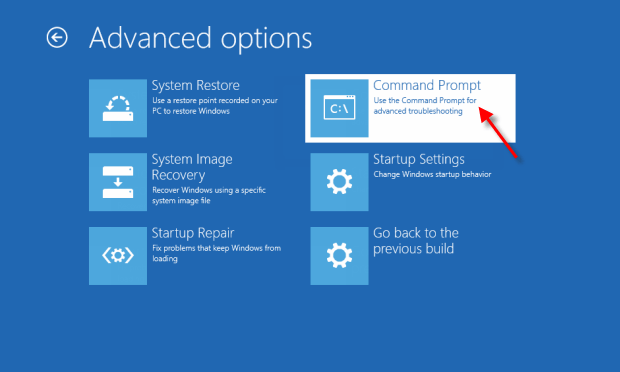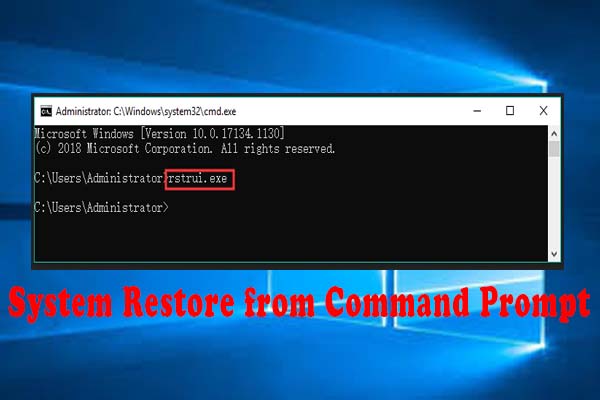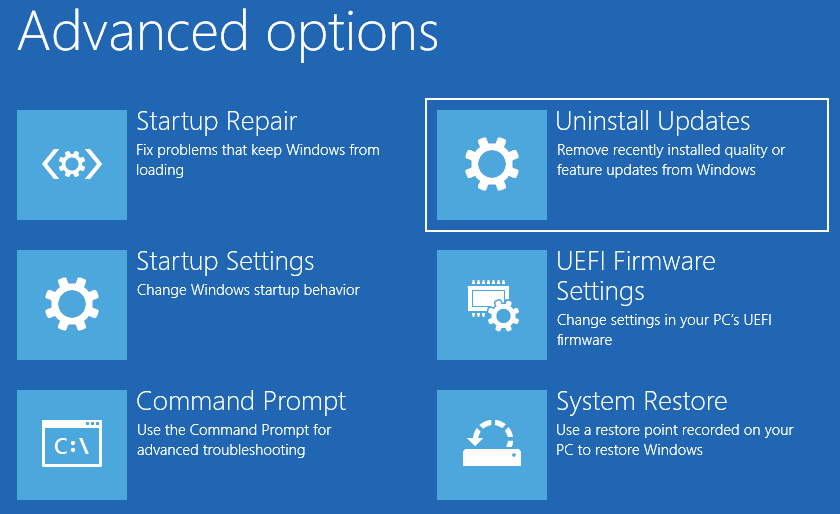

- #WINDOWS SYSTEM RECOVERY WINDOWS 10 CMD HOW TO#
- #WINDOWS SYSTEM RECOVERY WINDOWS 10 CMD UPDATE#
- #WINDOWS SYSTEM RECOVERY WINDOWS 10 CMD PC#
- #WINDOWS SYSTEM RECOVERY WINDOWS 10 CMD WINDOWS 7#
#WINDOWS SYSTEM RECOVERY WINDOWS 10 CMD PC#
Before you do, you can read this post to boot your Windows 10 PC from Safe Mode. This process is similar to do on Windows 7.
#WINDOWS SYSTEM RECOVERY WINDOWS 10 CMD HOW TO#
How to Perform System Restore from Command Prompt Windows 10 Let’s see how to perform a Windows 10 system restore from command prompt. Now, your system should be restored to an earlier working state. Then you will receive a confirmation message: Once started, System Restore cannot be interrupted. In the list of restore points, select a restore point that you want to restore and click Next. Then type rstrui.exe command and hit Enter In the command prompt, type cd restore command ad hit Enter. Select the Safe Mode with Command Prompt by pressing the arrow keys. During the start process, press F8 key to open the Advanced Boot Options screen. Press the Power button to turn on your PC.
#WINDOWS SYSTEM RECOVERY WINDOWS 10 CMD WINDOWS 7#
How to Perform a System Restore from Command Prompt Windows 7 Now, let’s see how to perform sys restore command on Windows 10 and Windows 7. This is because, as you know, the fake antivirus programs and ransomware infections may block the Safe Mode of your operating system.Īt this time, you have to run system restore from command prompt. However, performing a system restore is not an easy operation. So, when you encounter the ransomware attacks, you may need to restore system. Besides, you can use this feature when some ransomware attacks your computer and damage the system files.

Press F6 or the number key 6 to choose Enable Safe Mode with Command Prompt. In the interface of "Startup Settings", click on Restart button. After your PC restarts to the Choose an option screen,follow the given route to access advanced startup options: Troubleshoot > Advanced options > Startup Settings. If your computer fails to access Windows session due to system failure, you can try this method to restore the computer to its previous state. Way 7: Initiate it through Safe Mode with Command Prompt Follow the instructions to complete system restore. Wait for seconds, then you can see the interface of System Restore. Select an account with administrator privileges and enter the account password. In the interface named "advanced startup option", click the following options one by one: Troubleshoot > Advanced options > System Restore.
#WINDOWS SYSTEM RECOVERY WINDOWS 10 CMD UPDATE#
Follow the given route to access advanced startup options: Update & Security > Recovery > Restart now. On the desktop, click the Start button and then choose the Settings icon. Way 6: Access it from Windows Recovery mode The interface of System Restore would pop up.

In the "Create new task" window, input rstrui and hit Enter. Step 2: Click on the "File" tab and choose Run new task. Step 1: Press Ctrl, shift, and Esc keys simultaneously to open Task Management.

Way 5: Run System Restore from task manager Then choose Open System Restore in the "Advanced recovery tools" section. In the "Control Panel" window, type recovery in the search box, and then select Recovery. If there is no shortcut to System Restore on the desktop, read this article to open the control panel in other ways: 7 Ways to Open Control Panel in Windows 10. Double-click the icon of the control panel on the desktop. Way 4: Access it through the Control Panel You can see the interface of System Restore and then follow the instructions. The System Restore window will open immediately. Step 1: In the search box on the taskbar, type cmd and choose the Command Prompt. Way 3: Open System Restore using Command Prompt Then follow the steps in the System Restore wizard. Type Create a restore point in the search box, and click the top result to open the "System Properties" window. Open the Run command by pressing the Windows key + R key. Way 1: Open System Restore through Run command


 0 kommentar(er)
0 kommentar(er)
